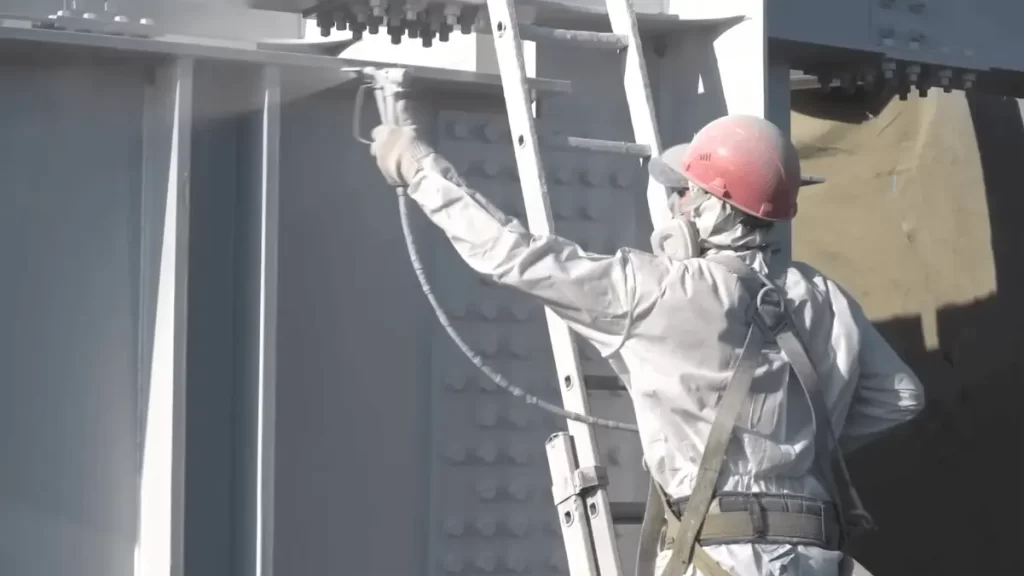What Division is Coatings in Construction?


What Division is Coatings in Construction?
The construction industry utilizes coatings for surface protection, aesthetic enhancement, and achieving durability. In the MasterFormat system maintained by the Construction Specifications Institute (CSI), a coating is categorized into divisions based on the processes and construction materials. This system enables an architect, engineer, or contractor to prepare a detailed project within a defined scope of work or ensure that the materials are in accordance with the standards of the industry. Coatings in this sense include paints, protective and specialty finishes, and treatments. In most instances, coatings are categorized under division 09 – Finishes. However, some specialty coatings are also placed in other divisions depending on their intended purpose. It is important to recognize the construction classification boundaries concerning coatings to ascertain appropriate use, legal compliance, and durability.
In what sub-section can one place coatings in construction?
In the CSI MasterFormat system coatings are primarily assigned to Division 09 – Finishes. The primary purpose of this division is to incorporate all finishing elements that aid in the beauty, protection, and durability of a structure. Specifically, coatings are part of Section 09 90 00 – Painting and Coating which encompasses anything dealing with surface preparation, painting, and finishing processes. Coatings inclusion under the finishes division demonstrates their application in surface protection and beautification enhancement for walls, ceilings, floors and external surfaces.
Understanding Division 09 – Finishes
In the context of construction, Division 09 is particularly important as it contains Scope of Work related to surface finishes.” In this section, there are some subcategories that outline various types of paints and surface treatments.” Section 90 00 – Painting and Coating includes general paint applications and protective coatings applied to walls, ceilings, and structural elements. Section 09 96 00 – High-Performance Coatings covers specialized coatings that enhance durability as well as chemical and environmental protection. Section 09 97 00 – Special Coatings includes anti-graffiti, anti-slip, and other specialized industrial finishes. These subclasses help the construction professional detail the appropriate materials to be used on different surfaces and in varying conditions.
Types of Coatings Used in Construction
Coatings in constructions have many roles besides just increasing a building’s aesthetic appeal. They help shield buildings from environmental impacts, enhance their strength, and improve their fire and moisture resistance. Architectural coatings are also referred to as paints and is one of the most popular types of coatings in a construction project. These coatings are used toward the improvements of both interiors and exteriors of a premise and help protect these surfaces from damage. They are available in a range of finishes, including matte, satin, and gloss, which differ in terms of durability and beauty.
Another category of coatings is the protective coatings which are extremely fundamental to the protective measures of materials from damages. Such coatings are usually applied on steel, concrete, and wooden surfaces to protect them from corrosion, moisture seepage, and chemicals. For instance, epoxy coatings are frequently employed in industrial and commercial settings because they are highly resistant to chemicals and abrasives. In the same manner, polyurethane coatings are also very useful in preventing UV light and are thus appropriate for outside use where conditions such as sunlight and weather may be prevalent.
Fire protection coatings help achieve the required level of fire safety compliance for buildings and structures. Intumescent coatings, or fire protection coatings, are defined as those that expand within a defined temperature range and form a protective insulating layer that retards heat transfer. It is applied to active fire protective features such as structural steel, wood and other materials prone to burning concrete in order to increase fire resistance and assist in compliance with building regulations. Generally, fire resistant coatings are considered a part of ‘division 07- thermal and moisture protection’ since they do more than provide a covering; they contribute towards the fire safety of the structure.
Coatings meant for fabrication in industrial work are designed to withstand extensive wear and tear all while maintaining their functionality and are applied to bridges, marine constructions, pipelines and chemical facilities. These coatings need to endure a wide range of corrosive environments such as saltwater and industrial chemicals, as well as extreme temperatures. Structures of steel and concrete are routinely finished with zinc rich, epoxy or polyurethane coatings for corrosion protection and enhanced service span.
Importance of Coatings in Construction
Coatings are crucial in enhancing the lifespan, protection, and attractiveness of structures. One of their primary roles is shielding materials from harm inflicted by the environment, such as corrosion, moisture seepage, UV rays, and fire risks. In the absence of protective coatings, building materials like steel and concrete are bound to suffer rapid deterioration due to harsh environmental conditions. This will lead to expensive maintenance and, in the worst case scenario, result in structural collapse. Construction engineers and professionals have the option to choose the right coatings to augment burnable materials, lower maintenance expenses, and strengthen the structure’s resiliency.
Coatings serve more than just protective purposes, as they help meet fire safety standards. Fireproof coatings assist structures in complying with local fire codes and regulations, hence adding supplementary defense to buildings in the event of a fire. Apart from that, waterproof coatings are also effective in preventing leaks and moisture destruction, helping to mitigate mold growth and fortifying the structure’s integrity over prolonged periods.
Another important consideration of coatings revolves around the design and aesthetic value. The appearance of a building is accentuated with the application of quality paints and finishes, and it looks more polished and professional. Residential homes, commercial offices, and industrial facilities all have varying requirements and architects and designers are able to achieve the exact color, texture, and surface finish that they envision due to coatings. Additionally, coatings that are applied properly help in the maintenance of a building’s appearance by preventing soiling, fading, and surface abrasion.
Read More: What is a Lien Waiver in Construction?
Conclusion
Within the CSI MasterFormat structure, coatings are placed under Division 09 Finishes, specifically in Section 09 90 00 Painting and Coating. Specialty coatings, such as fireproofing or waterproofing, may also be included in Division 07 – Thermal and Moisture Protection or Division 13 – Special Construction depending on their use. Coatings are vital in construction because they add value, protect materials, and help meet safety requirements. Architectural paints and industrial-grade protective coatings, available today, serve different purposes–to maintain the strength, safety, and beauty of a structure.

